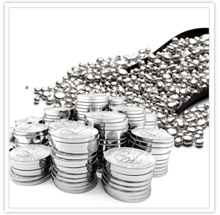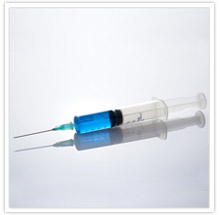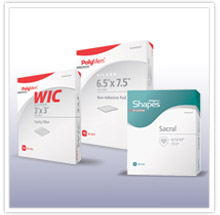
|
The "Silver Bullet" for Wounds?
It might sound like something out of a sci-fi novel, but silver, a natural antimicrobial, continues to gain popularity as a wound care dressing component.
Silver has been used for centuries for applications ranging from fighting off bacteria to keeping food from going bad. The Phoenicians commonly stored their water, wine and vinegar in silver bottles to keep it from spoiling, and in the early 1900s silver coins were often placed in milk bottles to prolong freshness. Silver’s use in preventing and treating infections actually dates back to World War I, before antibiotics came into use.
|
Silver is a broad-spectrum agent and is effective against gram-positive and gram-negative organisms as well as fungi and resistant strains of bacteria (such as MRSA and VRE). It has not been found to be toxic or harmful to wounds and can speed up the healing of infected, colonized and chronic wounds through both anti-inflammatory and antimicrobial mechanisms.1
The FDA has approved a number of different silver-impregnated wound dressings, including hydrogels, hydrofibers, foams, hydrocolloid, gauze and alginates. These dressings can work in four different ways1:
- By releasing silver into the wound bed for antimicrobial action
- By absorbing wound exudates into the dressing, where they are acted upon by the silver
- By absorbing wound exudates and then releasing silver into the wound bed for antimicrobial activity
- By releasing silver sulfadizine into the wound
When choosing a silver-impregnated dressing, physicians should consider what action the silver is taking on a particular wound.
|

|
Panel: All Adults Should Get Whooping Cough Vaccine
On February 22, the Advisory Committee on Immunization Practices, a federal advisory panel, voted to recommend that all adults in the U.S. get vaccinated against whooping cough.
Since a whooping cough vaccine for adults and adolescents was first licensed in 2005, the group has continued to add age groups to the populations it recommends receive the vaccine. In 2010, they added elderly people who spend a lot of time around infants to that group. The February 22 recommendation now means that all adults should receive at least one dose of the vaccine.
Whooping cough is a highly contagious bacterial disease that can be fatal in rare cases.
To learn more, click here.
|
 |
 |


|
PolyMem®: A Multifunctional Wound Dressing
PolyMem wound dressings effectively cleanse, fill, absorb and moisten wounds. They're available in a wide variety of configurations and can effectively replace most common dressings, including:
- Polyurethane or silicone foams
- Hydrogels (when moistened with sterile water or saline)
- Alginates (by choosing PolyMem Wic Silver™)
- Hydrocolloids
- Transparent films
- Gauze and traditional dressings
PolyMem's family of products can be used as primary dressings, secondary dressings or a combination of both to support the entire healing continuum.
|
Product pricing is only visible to registered promedsupply.com customers. If you are not yet registered, give us a call at (800) 648-5190 and our Customer Care Professionals will be happy to get you set up.
|
|






